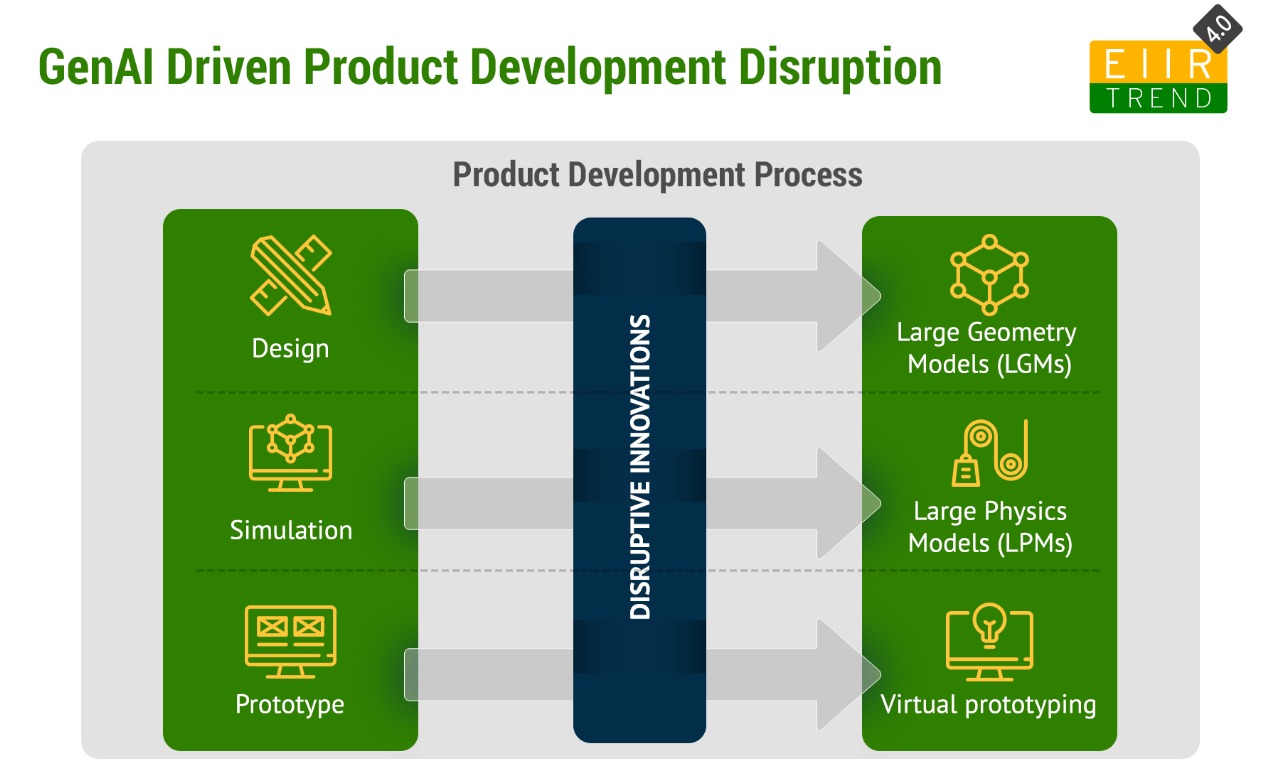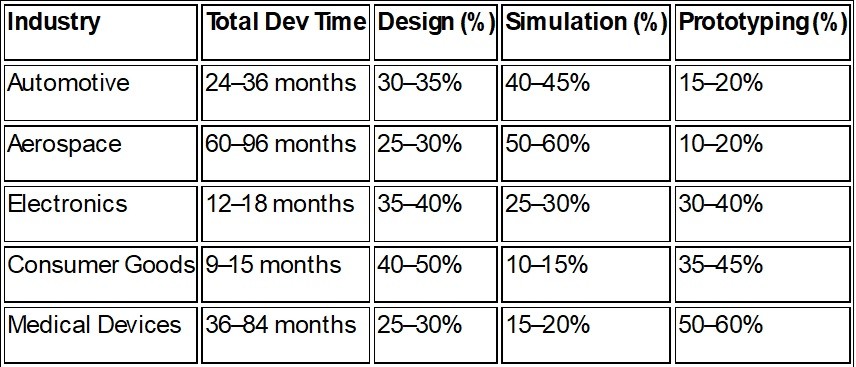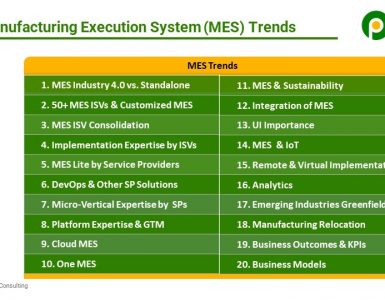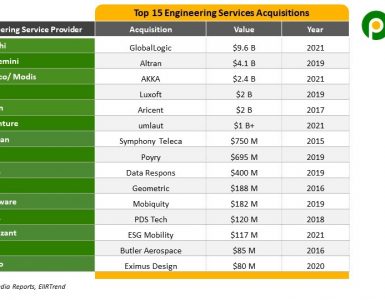Generative AI is poised to disrupt product development in the same way it has transformed software and content generation. While virtual prototyping has already streamlined testing, the rise of Large Geometry Models (LGMs) and Large Physics Models (LPMs) promises a breakthrough in design and simulation. This blog explores how engineering leaders can harness GenAI to reduce product development cycles, unlock innovation, and lead in the era of intelligent design.

Current Product Development Process & Disruption Potential
Across industries, product development typically involves three key stages: design, simulation, and prototyping. The total development time varies significantly by industry, ranging from 1 to 7 years. Each industry allocates a different percentage of time to these stages:

A clear pattern emerges: each stage consumes a significant portion of the total development time. To achieve a step-change in productivity, all three stages—design, simulation, and prototyping—must be reimagined through disruptive technologies.
Prototyping has already been transformed by virtual prototyping, significantly reducing the need for physical models and cutting both time and cost.
Now, design and simulation, which account for the majority of development time in most sectors, present the next frontier. These are ideal candidates for disruption through GenAI, offering the potential to accelerate timelines and enhance innovation dramatically.
Why Has the Product Development Process Not Been Disrupted So Far? Disruptive vs. Sustaining Innovation
Looking at the history of product engineering, the introduction of CAD and CAE tools was a major disruptive leap, automating manual drawings and calculations and transforming engineering workflows.
Since then, however, most advancements have been sustaining innovations: incremental improvements in software capabilities, user experience, visualization, virtualization, digital thread, MBSE, digital engineering, high-performance computing, cloud adoption, and analytics. Even early applications of GenAI were limited to virtual assistants for design and simulation enhancements, not transformation.
Today, a new wave of disruptive innovation is emerging with LGM, LPM, and Virtual Prototyping. These technologies can dramatically reduce time and cost while democratizing access to advanced design and simulation. They enable intelligent co-creation of products, marking a fundamental shift in how engineering is done.
LGM and LPM: GenAI Enablers
While prototyping has already been disrupted by virtual prototyping, LGMs and LPMs are poised to transform design and simulation.
- Large Geometry Models (LGM): Analogous to LLMs, but trained on millions of geometrical meshes to enable rapid design generation.
- Large Physics Models (LPM): Trained on validated simulation data, capable of predicting the physical behavior of designs in real time.
These models reduce reliance on traditional CAD/CAE cycles by delivering faster, simulation-accurate predictions and geometry optimization. They can cut simulation time from days to seconds, support optimization loops running 1,000x faster, and enable real-time geometry generation.
Product Development Workflow with LGM and LPM
Just as OpenAI, Anthropic, and others built LLM platforms, new LGM/LPM platforms are emerging. These integrate into existing CAD, CAE, Simulation, and PLM systems and optimize product development flows.
Engineering Services Provider LGM, LPM Playbook
- Use Case Identification: Focus on compute-intensive sectors—automotive, aerospace, semiconductors, medical devices.
- Ecosystem Mapping: Track startups and ISVs working on GenAI-enabled engineering, developing LGM, LPM use cases, and platforms.
- PoC Development: Pilot GenAI applications with a few core use cases.
- Customer Engagement: Identify and co-innovate with early adopters.
- Knowledge Scaling: Document wins and build reusable accelerators.
The next productivity curve in engineering is here.
Just as LLMs transformed business processes, LGMs and LPMs are set to revolutionize design and simulation. CAD is no longer the gatekeeper. Simulation is no longer the bottleneck.
GenAI will redefine product development from years to months. This is not just automation. It’s imagination, unlocked.
Bottom Line: The future belongs to intelligent platforms that co-design, co-simulate, and co-optimize with engineers. To stay ahead, engineering leaders must embrace GenAI now.






 Pareekh Jain
Founder of Pareekh Consulting & EIIRTrends
Pareekh Jain
Founder of Pareekh Consulting & EIIRTrends
Add comment